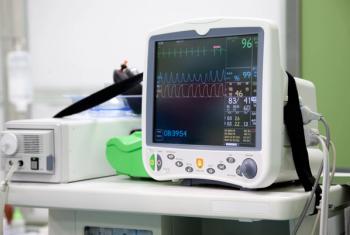
Patients hospitalized due to acute decompensated heart failure have both a higher rate of annual mortality, compared with patients who have chronic ambulatory heart failure, and of dying within 6 months of hospital release.


Patients hospitalized due to acute decompensated heart failure have both a higher rate of annual mortality, compared with patients who have chronic ambulatory heart failure, and of dying within 6 months of hospital release.
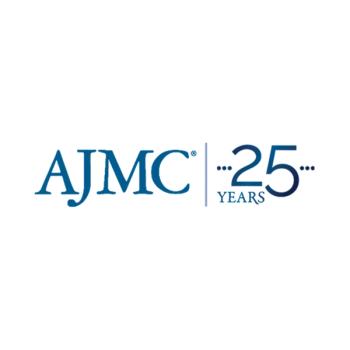
The paper appeared a few months before the EMPA-REG OUTCOME trial revealed the potential of a new drug class, the SGLT2 inhibitors, in preventing hospitalization for heart failure.

The FDA approved AstraZeneca’s Farxiga (dapagliflozin) for the treatment of heart failure with reduced ejection fraction (HFrEF) in adults with and without type 2 diabetes (T2D). It's the first SGLT2 inhibitor to gain this approval in what is expected to be the next front of competition in this game-changing drug class.

More than 26 million individuals worldwide live with heart failure every day. Because the condition is irreversible, finding ways and treatments to remedy this damage has long been a goal of physician-researchers.

There is a 15% to 20% greater chance of death in the 90 days following a hospitalization for heart failure among patients with Medicare compared with the general population. Social determinants of health (SDOH) are an influencing factor of this rate.
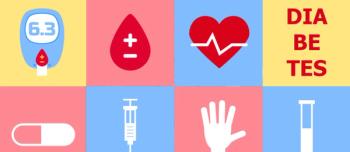
The risk of both heart attack and stroke increases 2- to 3-fold among individuals with comorbid diabetes and cardiovascular issues; however, recent study results show improved odds of both not occurring, as well as less of a risk of hospitalization for heart failure or lower extremity amputation.

In the United States, heart failure affects a patient population of over 6.5 million. Through medication management, transportation, and emotional support, among the many tasks they assist with, these patients’ caregivers provide services valued at $7.9 billion annually.

As more patients with heart disease live longer, physicians need better tools to assess frailty in those with heart failure. New study results suggest a multidimensional assessment approach is preferable to one that focuses only on physical metrics.

Despite positive results seen from the use of chloroquine and hydroxychloroquine in some patients hospitalized with coronavirus disease 2019 (COVID-19), concern is mounting about how these drugs affect patients’ cardiovascular health, specifically the heart.

The chemical symbol for iron is Fe, which stems from the Latin word for iron, Ferrum. Therefore, it is easy to see the connection on how ferritin is the protein responsible for iron storage and release in the body and transferrin is the protein responsible for transporting that iron.

Does patient representation in trials of acute coronary syndrome (ACS) correlate with epidemiologic studies of patients with the condition? According to recent results published in JAMA Cardiology, older patients, women, and black patients continue to be underrepresented in ACS trials.

Almost 70% of the world’s population could be living in urban areas, being continuously exposed to air pollution, by 2050, while cases of dementia are expected to triple. Recent study results highlight the link between cardiovascular disease and dementia, as mediated by long-term exposure to air pollution.
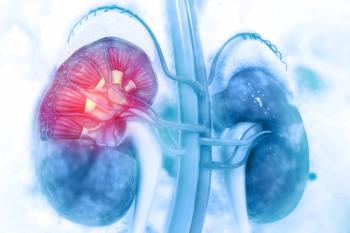
Dapagliflozin is currently indicated as an adjunct to diet and exercise to improve glycemic control in adults with type 2 diabetes (T2D). In the United States, it is also approved to reduce the risk of hospitalization for heart failure in patients with T2D and established cardiovascular (CV) disease or multiple CV risk factors.

Pregnancy complications that include preeclampsia, gestational hypertension, pre-term birth, and low birthweight serve as possible indicators for greater risk of heart failure in the long term, as indicated by change in global longitudinal strain on echocardiogram.

Evidence is considered lacking on the association between mortality and patients who have both cardiac injury and coronavirus disease 2019 (COVID-19). Is the rate of death higher among these patients compared with patients without cardiac disease who have COVID-19?

Are coding changes responsible for declines in the 30-day mortality rate for hospital admissions among veterans utilizing Veterans Health Administration medical centers? Which model is more accurate at predicting this measure: a claims-based model or a clinical factor–based model?

By 2030, heart failure—which tops the list of reasons for hospitalization among individuals older than 65 years—could tax the healthcare system $69.8 billion each year. Study results show the success of palliative care at reducing both healthcare costs and hospitalization.

Patients with cardiovascular disease are especially vulnerable to respiratory infections, although uncertainty remains on just what damage COVID-19 can cause in these patients. The flu season is also in full swing, with an estimated 440,000 individuals hospitalized so far in the United States alone, according to the CDC.

Eighty percent of annual costs for heart failure come from hospitalization for the condition, which more than 23 million persons suffer from worldwide, 6.2 million (27%) in the United States alone. These costs are estimated to increase almost 58% between 2012 and 2030, from $30.7 billion to $53 billion.

Barriers to better treatment start with the basic definitions of heart failure. Classifications in use for decades, such as the New York Heart Association system or the left ventricle ejection fraction measure, need an overhaul, and the field should take a precision medicine approach that brings analytics and biomarkers to the cause.

Updated results from the EASEL study show that lower risks of cardiovascular (CV) events, CV death, and CV mortality accompany initiation of canagliflozin, a sodium glucose cotransporter 2 inhibitor, in patients with type 2 diabetes (T2D) and high CV risk compared with use of other drugs.

Circulation, a peer-reviewed journal of the American Heart Association, just released its fourth annual Go Red for Women issue, in which researchers from the Smidt Heart Institute at Cedars-Sinai note the stark disparities in how heart disease manifests in women and men. For women, sudden cardiac death is often the first sign they even have heart disease.

Competing trials are under way that may show that the benefits of SGLT2 inhibitors in heart failure are a class effect.

There are more than 36 million smokers in the United States today, and most (70%) admit they want to quit. Individuals who decide to quit see a smaller risk of heart disease within 1 to 2 years, along with reduced risks of stroke and peripheral vascular disease. However, annual deaths from smoking still exceed 480,000 in the United States, where over 16 million live with smoking-related diseases that include infertility, lung cancer, and chronic obstructive pulmonary disease.
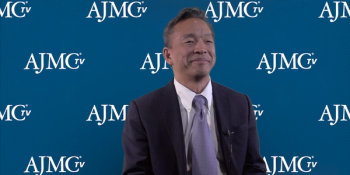
GUARD-AF is an example of the commitment of the BMS, Pfizer Alliance in trying to further the standard of care in patients with atrial fibrillation, said Roland Chen, MD, MS, vice president and head of clinical development for innovative medicines at Bristol-Myers Squibb.

259 Prospect Plains Rd, Bldg H
Cranbury, NJ 08512
© 2025 MJH Life Sciences®
All rights reserved.
